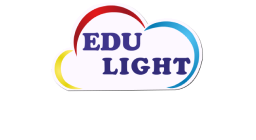In today’s rapidly evolving digital landscape, choosing the best e-learning content for your needs can be a daunting task. With a myriad of options available, ranging from courses,
modules, and platforms, it’s essential to make informed decisions that align with your learning objectives and preferences. To help you navigate this process effectively, here are
some key factors to consider when selecting e-learning content:
1. Define Your Learning Goals:
Before diving into the vast array of e-learning content available, take the time to define your learning goals and objectives. What skills or knowledge do you want to acquire? Are you looking to advance in your career, expand your skill set, or pursue personal interests? By clearly defining your learning goals, you can narrow down your options and focus on content that aligns with your specific needs.
2. Assess Your Learning Style:
Consider your preferred learning style and how you best absorb information. Do you learn best through visual, auditory, or hands-on methods? Are you more comfortable with self-paced learning or structured courses? Understanding your learning style can help you choose e-learning content that caters to your preferences and maximizes your learning experience.
3. Research Content Providers:
Conduct thorough research on different e-learning content providers to assess their reputation, credibility, and track record. Look for providers with a proven track record of delivering high-quality, engaging, and relevant content in your area of interest. Explore reviews, testimonials, and ratings from other learners to gauge the effectiveness and satisfaction level of their
offerings.
4. Evaluate Content Quality:
When evaluating e-learning content, prioritize quality over quantity. Assess the relevance, accuracy, and depth of the content, as well as the clarity of presentation and instructional design. Look for content that is up-to- date, well-structured, and aligned with industry standards and best practices. Additionally, consider the accessibility and usability of the content, particularly if you have specific accessibility requirements.
5. Explore Interactive Features:
Engaging and interactive features can enhance your learning experience and promote active participation. Look for e-learning content that incorporates multimedia elements such as videos, animations, quizzes, and simulations to reinforce concepts and encourage interactivity. Interactive features can help you stay engaged, retain information better, and apply concepts in real-
world scenarios.
6. Consider Flexibility and Accessibility:
Evaluate the flexibility and accessibility of the e-learning content, particularly if you have a busy schedule or specific learning needs. Look for content that offers flexible learning formats, such as self-paced courses, on-demand modules, or mobile-friendly platforms. Additionally, consider whether the content is accessible across different devices and platforms to
accommodate your learning preferences and lifestyle.
7. Seek Feedback and Recommendations:
Seek feedback and recommendations from peers, colleagues, or industry experts who have experience with e-learning content relevant to your needs. Tap into professional networks, online forums, and social media communities to gather insights and recommendations on quality content providers and courses. Learning from others’ experiences
8. Take Advantage of Free Trials and Demos:
Many e-learning content providers offer free trials, demos, or sample modules to allow learners to explore their offerings before committing. Take advantage of these opportunities to assess the content quality, instructional approach, and suitability for your learning goals. Experiment with different providers and courses to find the best fit for your needs before making a final decision.
In conclusion, choosing the best e-learning content for your needs requires careful consideration of your learning goals, preferences, and constraints. By defining your
objectives, researching content providers, evaluating content quality, exploring interactive features, considering flexibility and accessibility, seeking feedback, and taking advantage of
free trials, you can make informed decisions that support your learning journey effectively.






